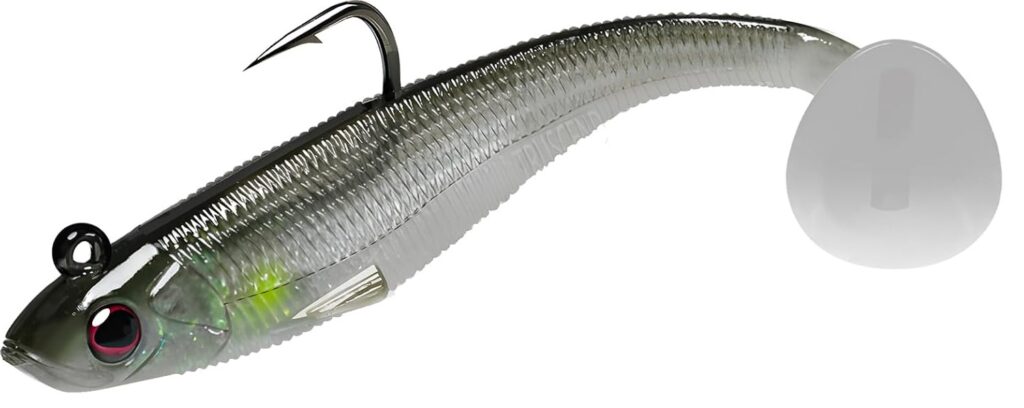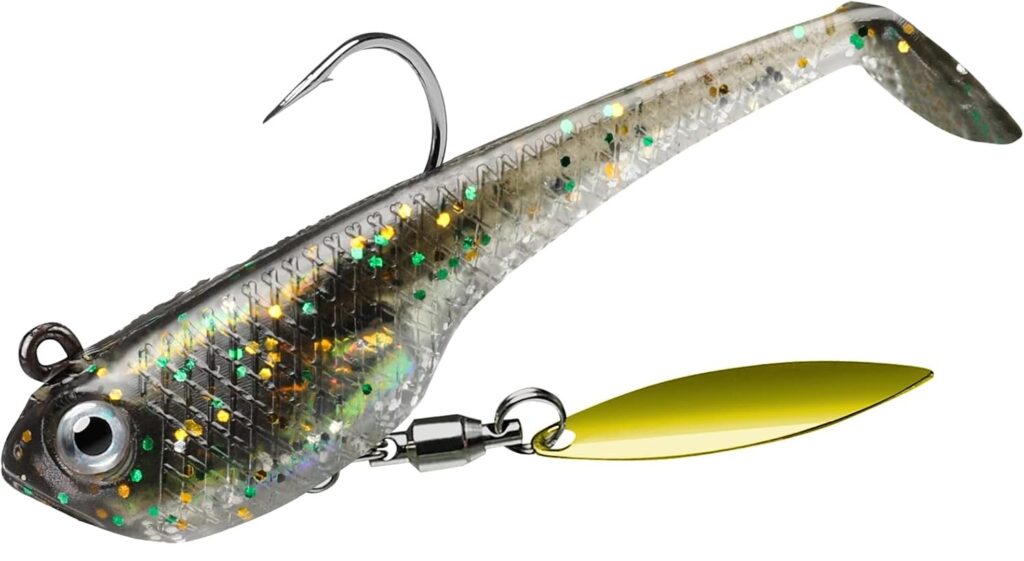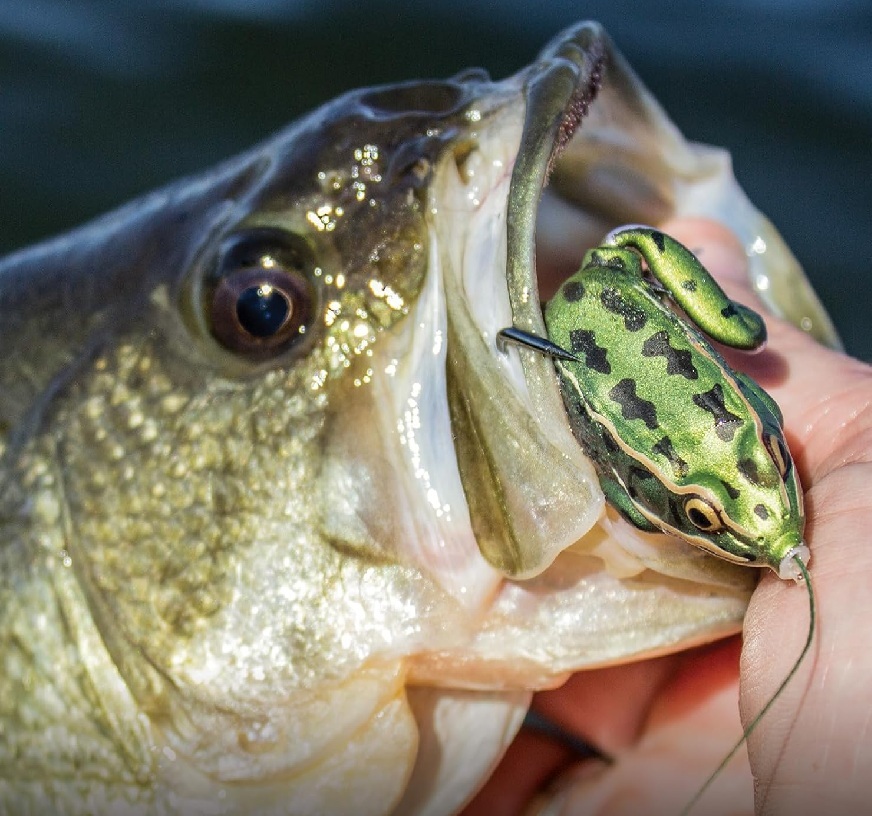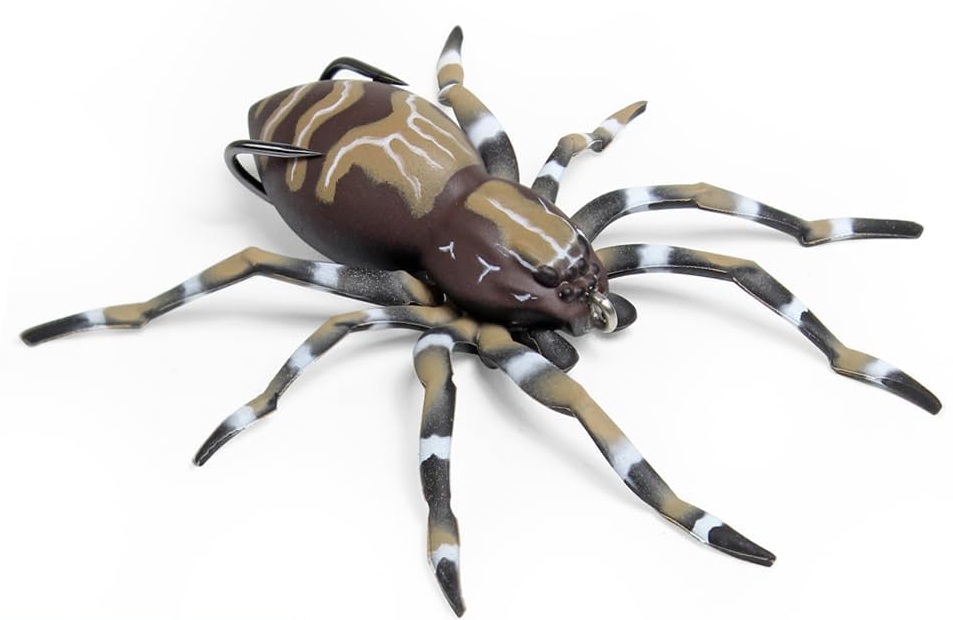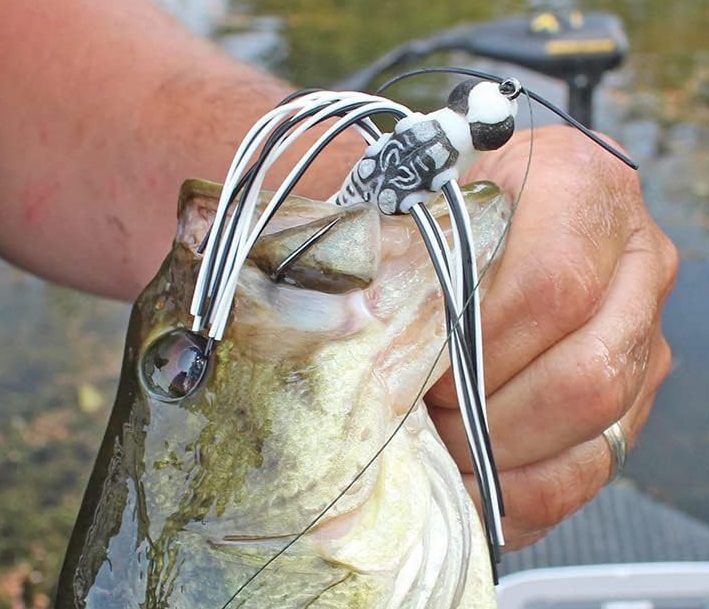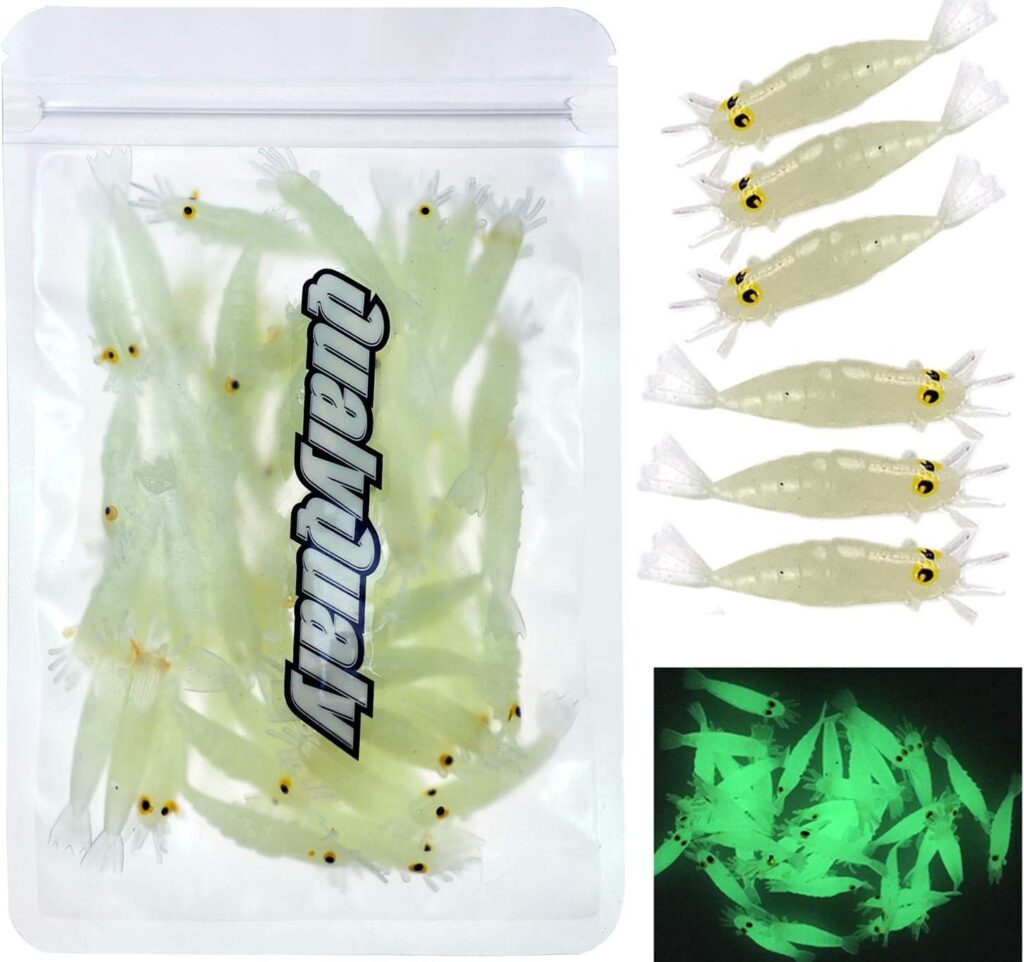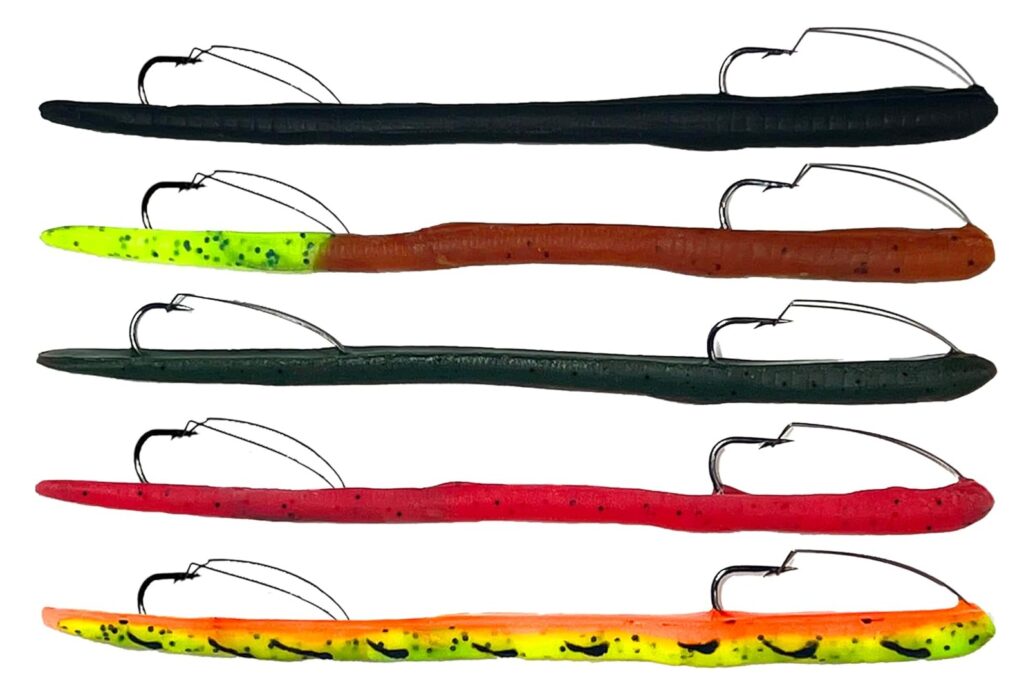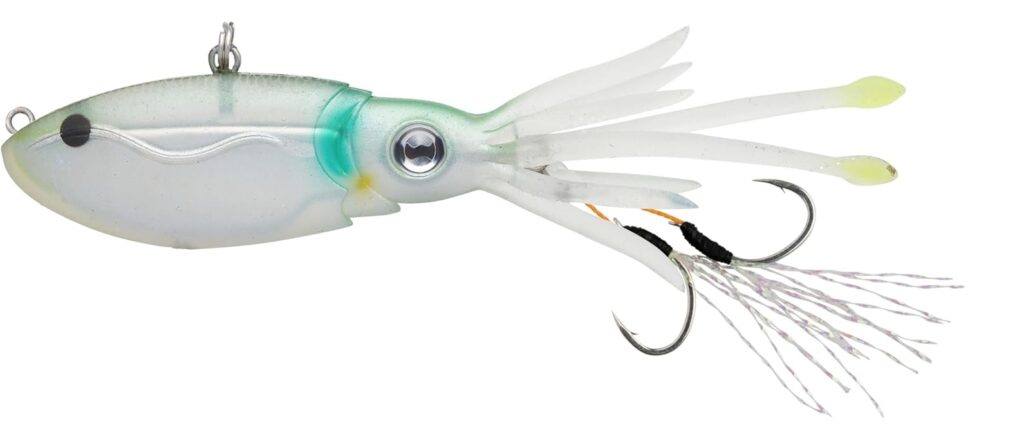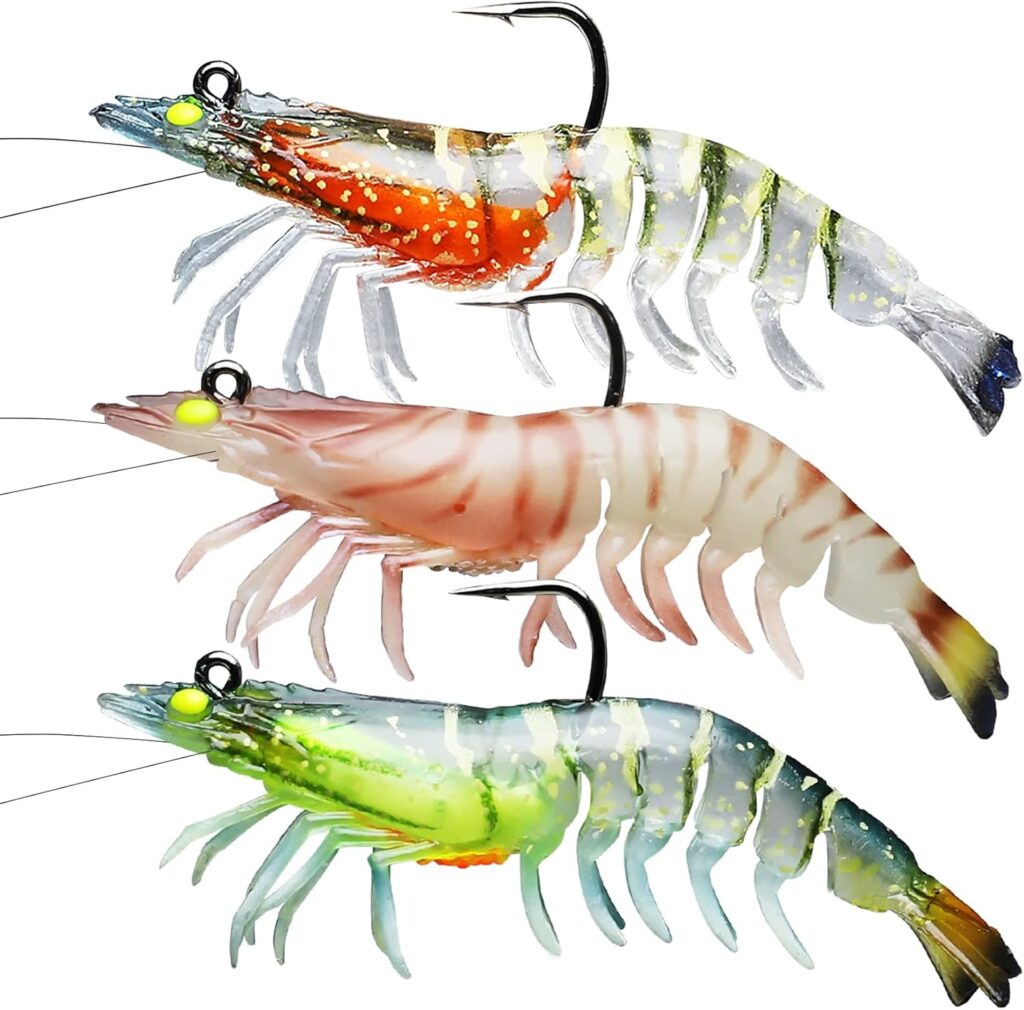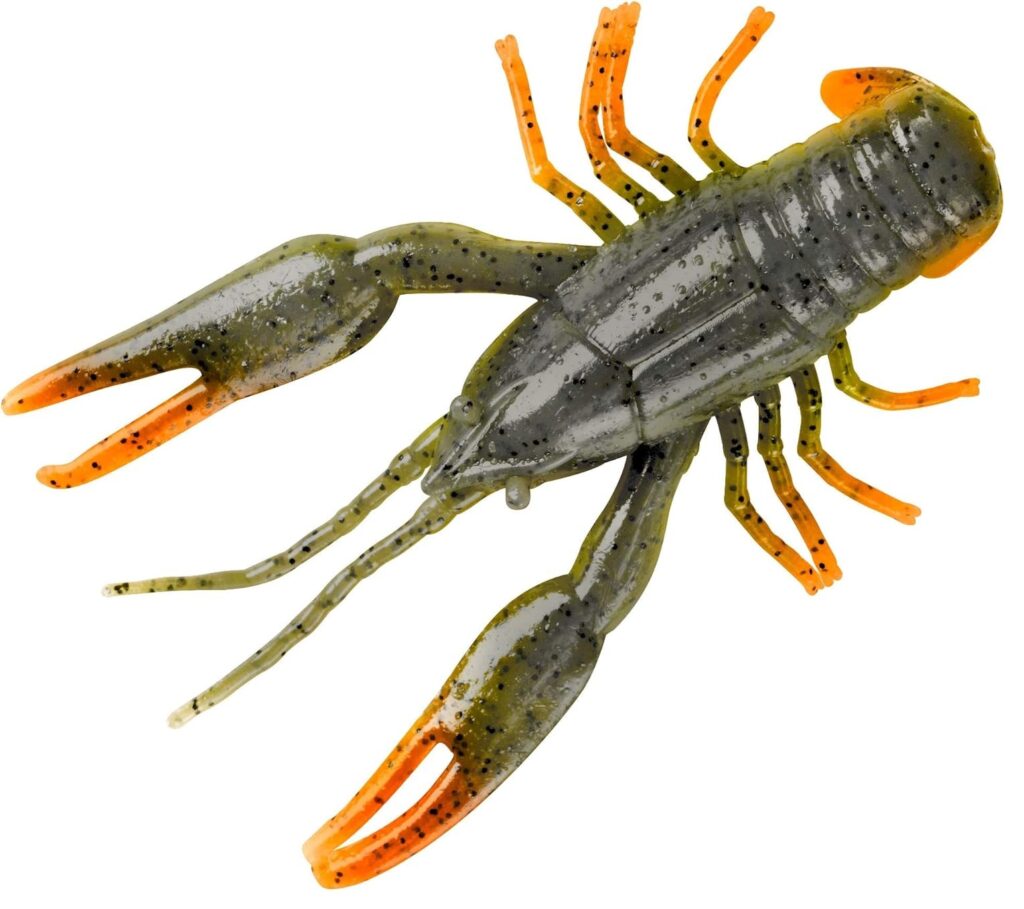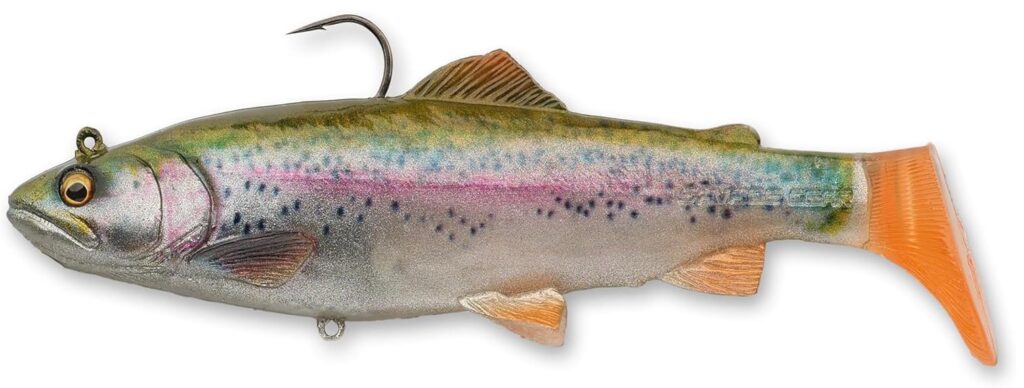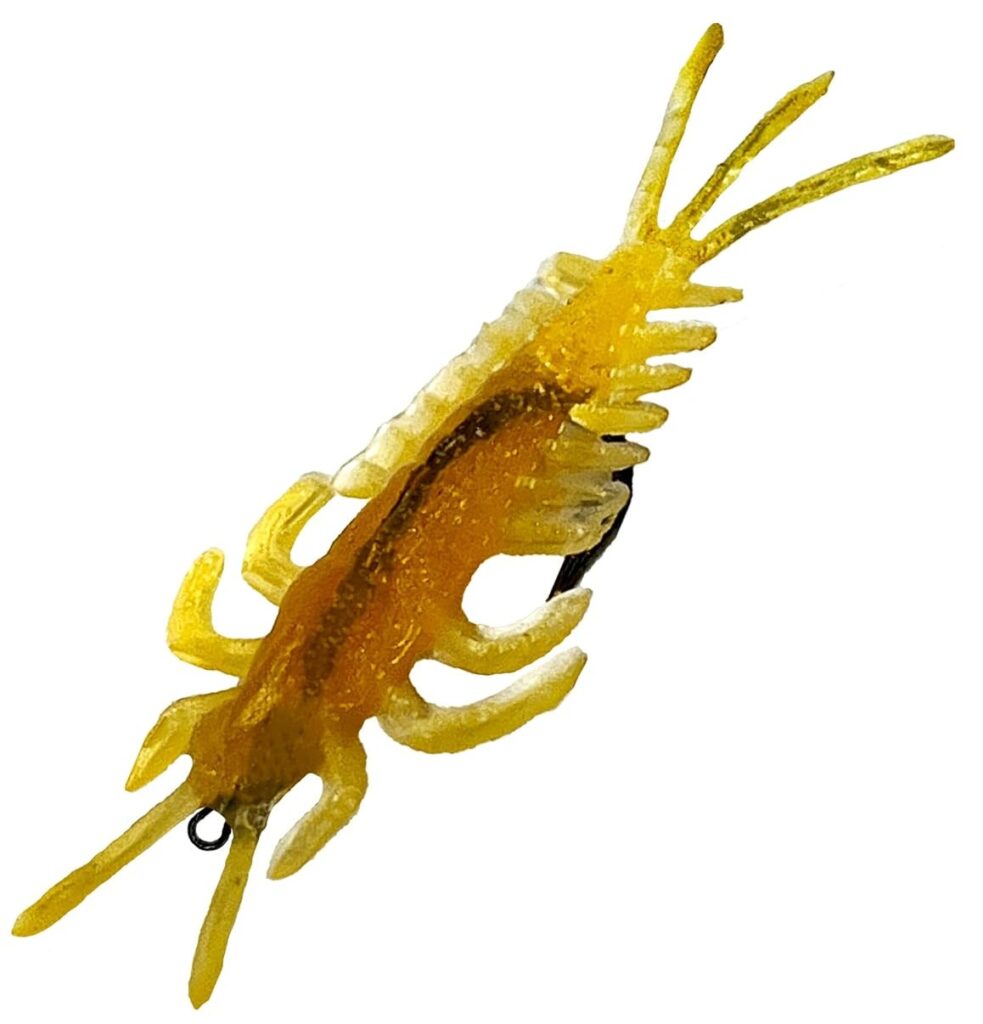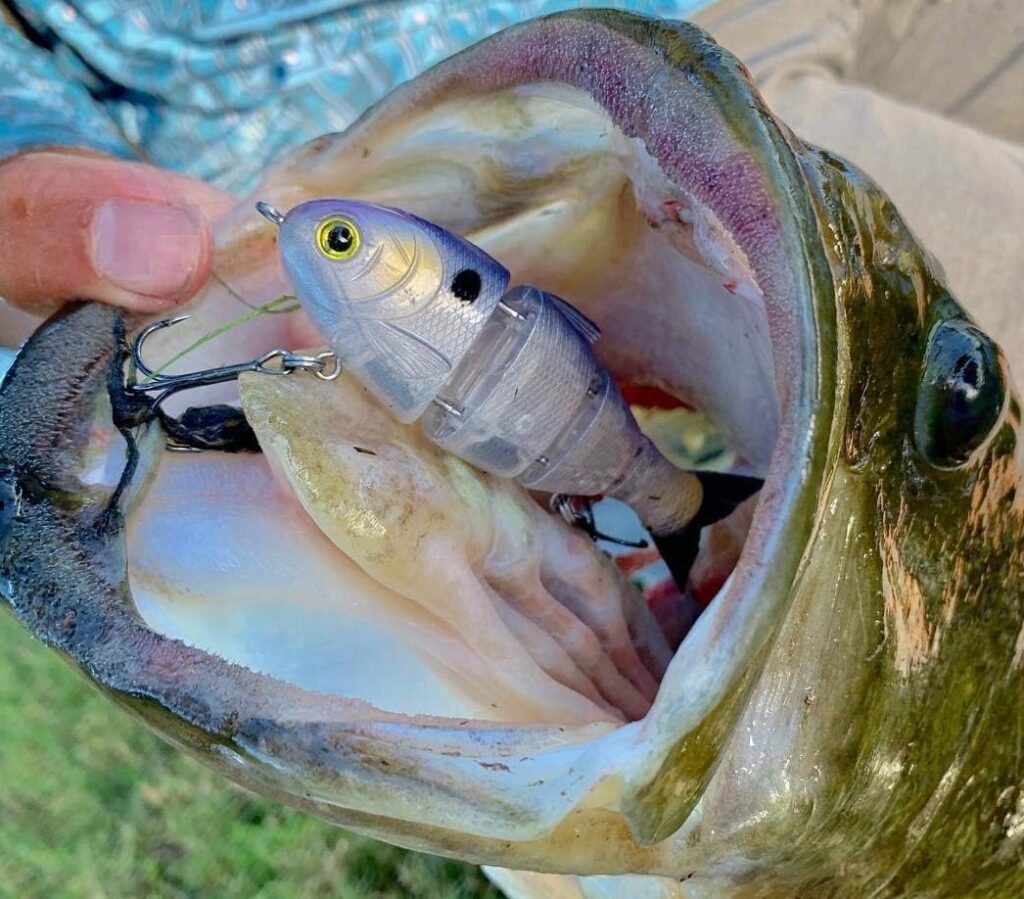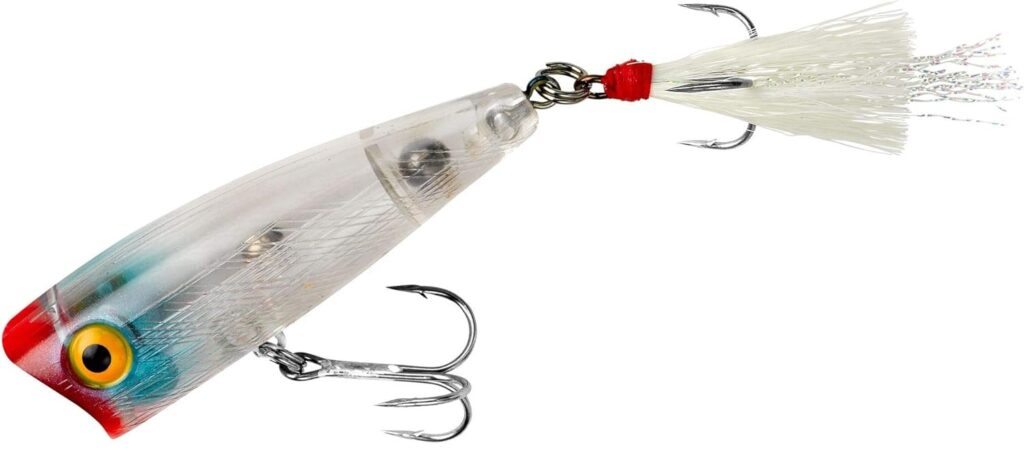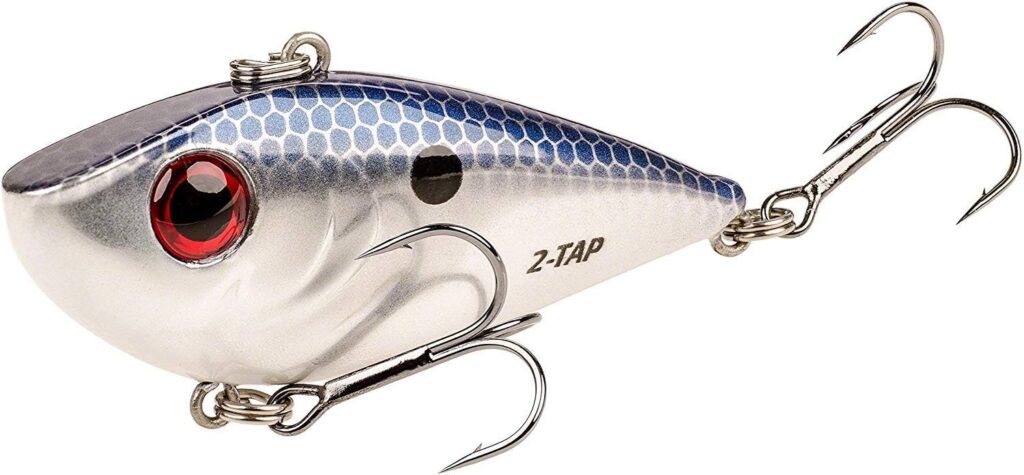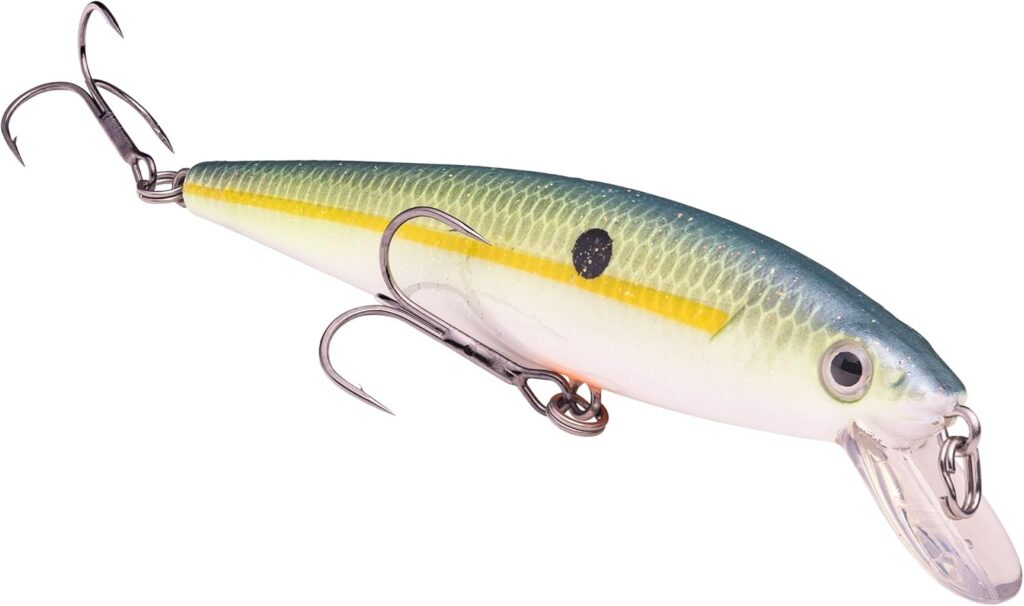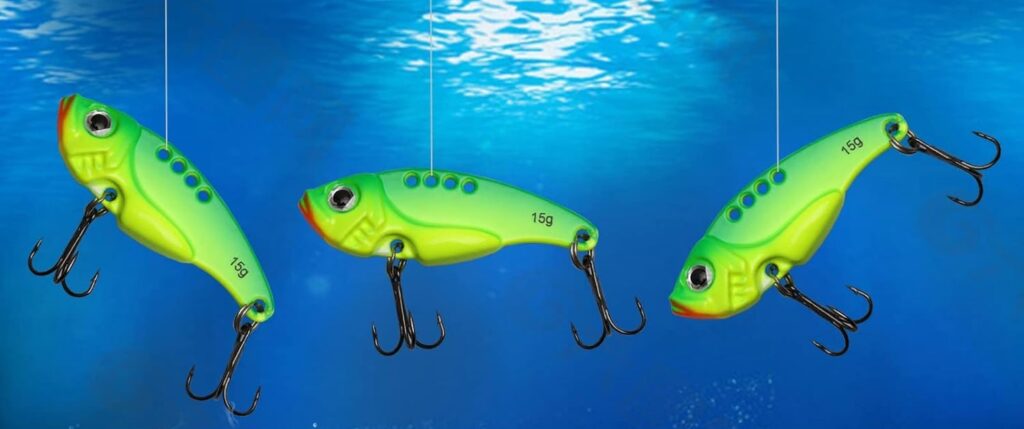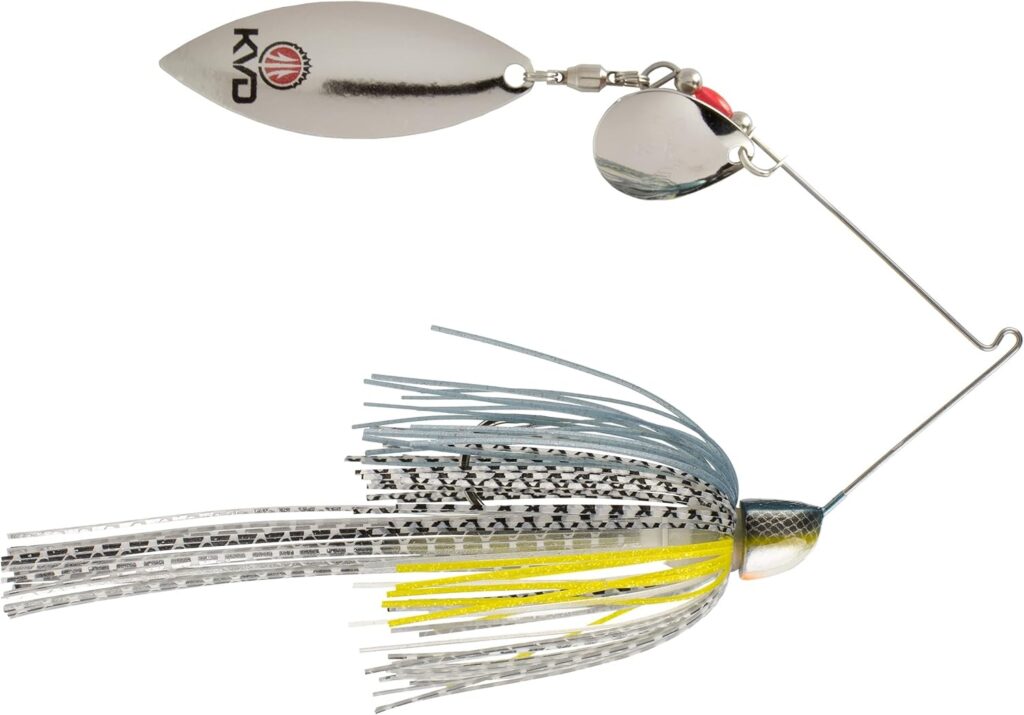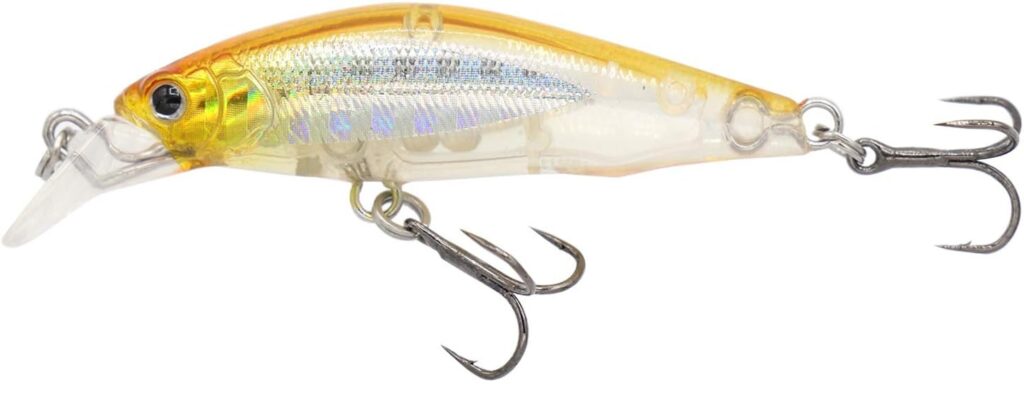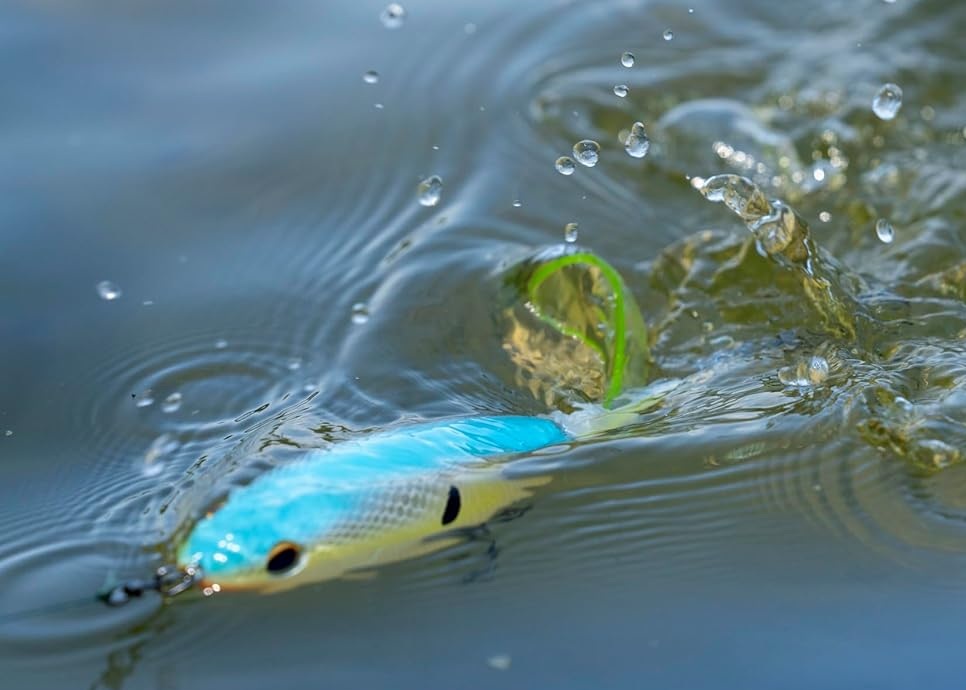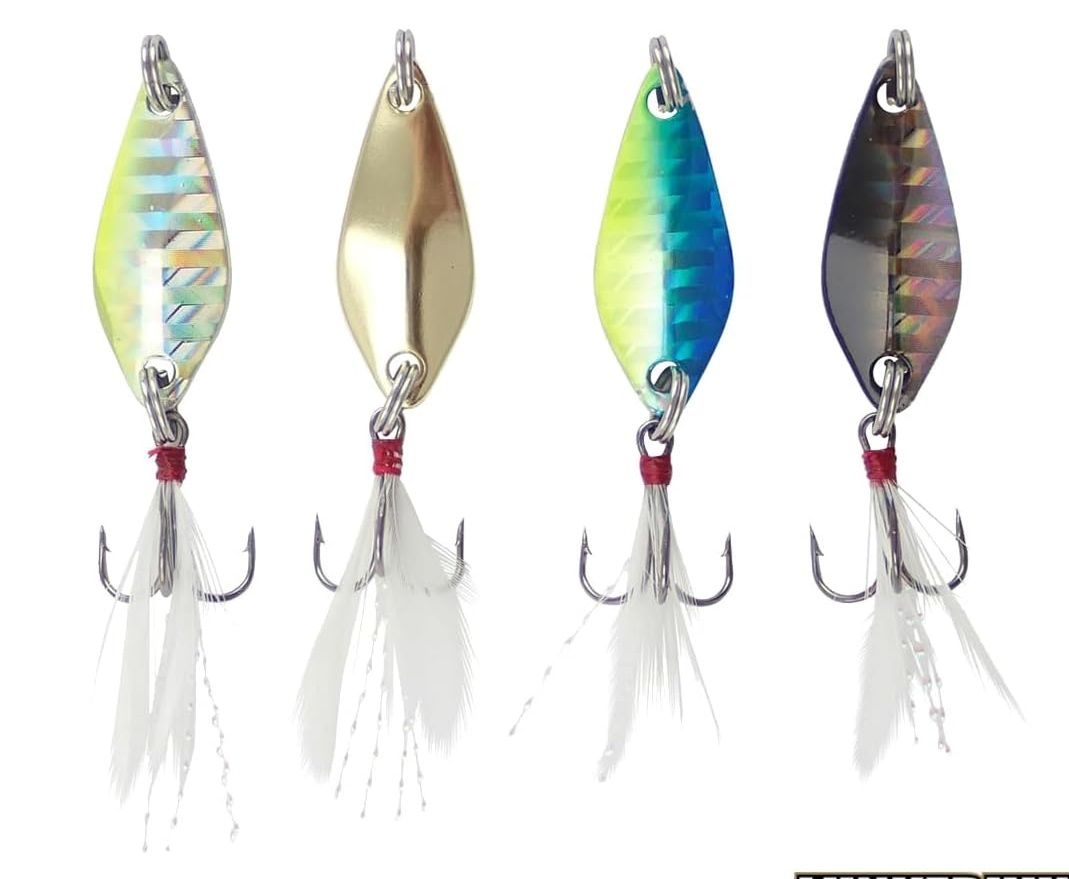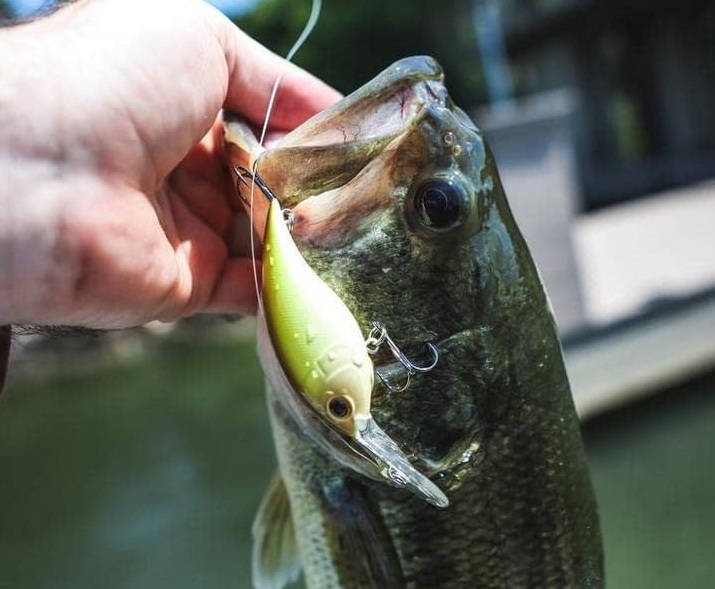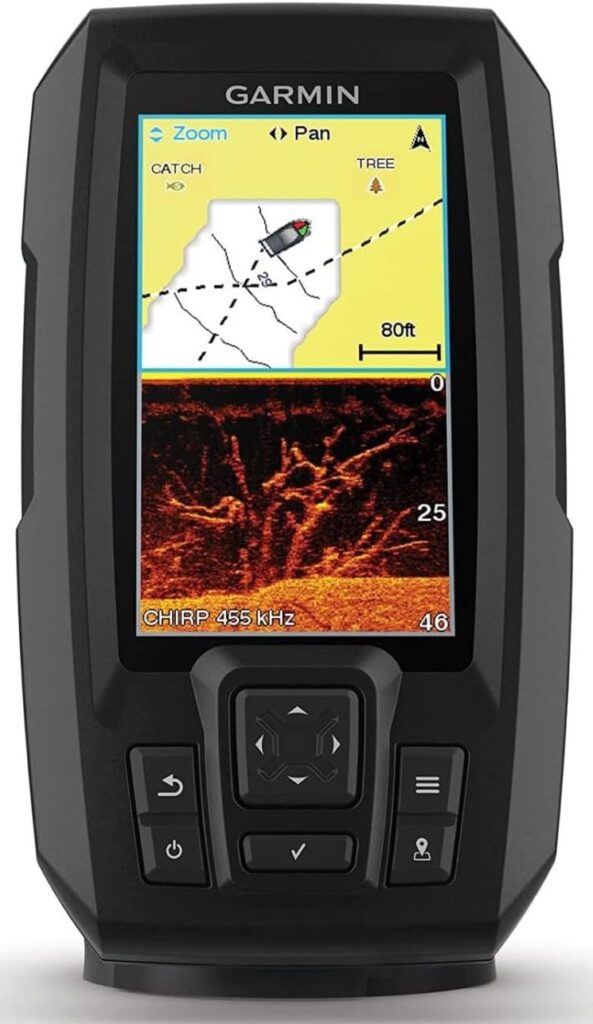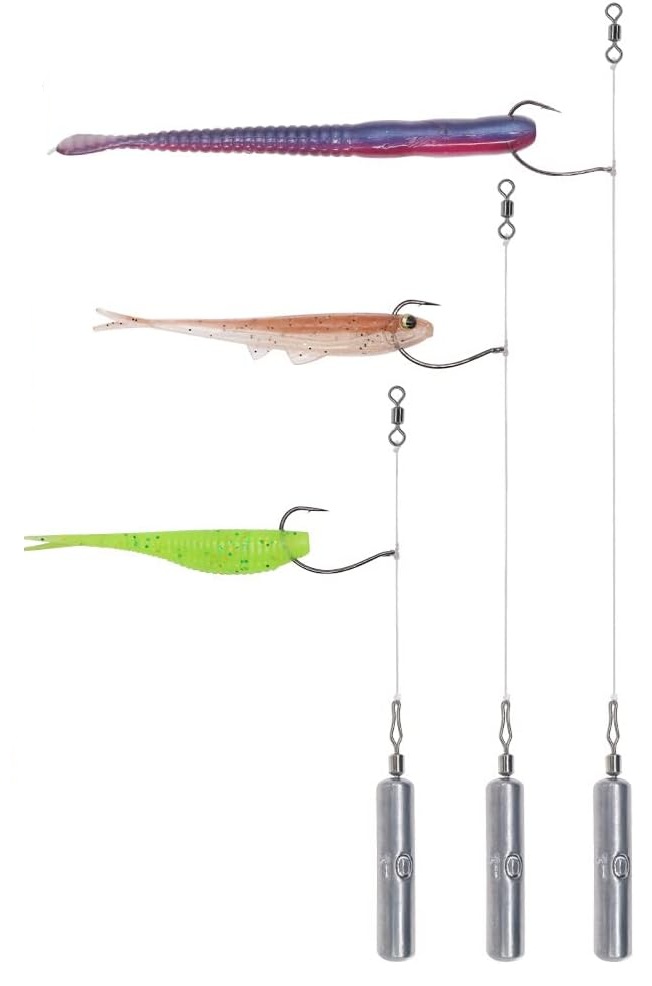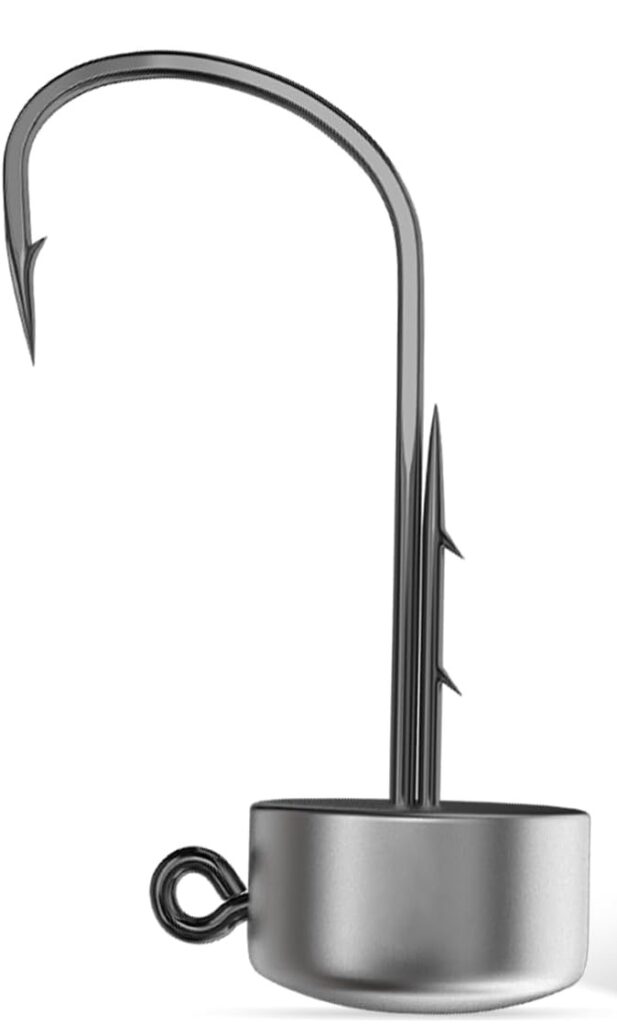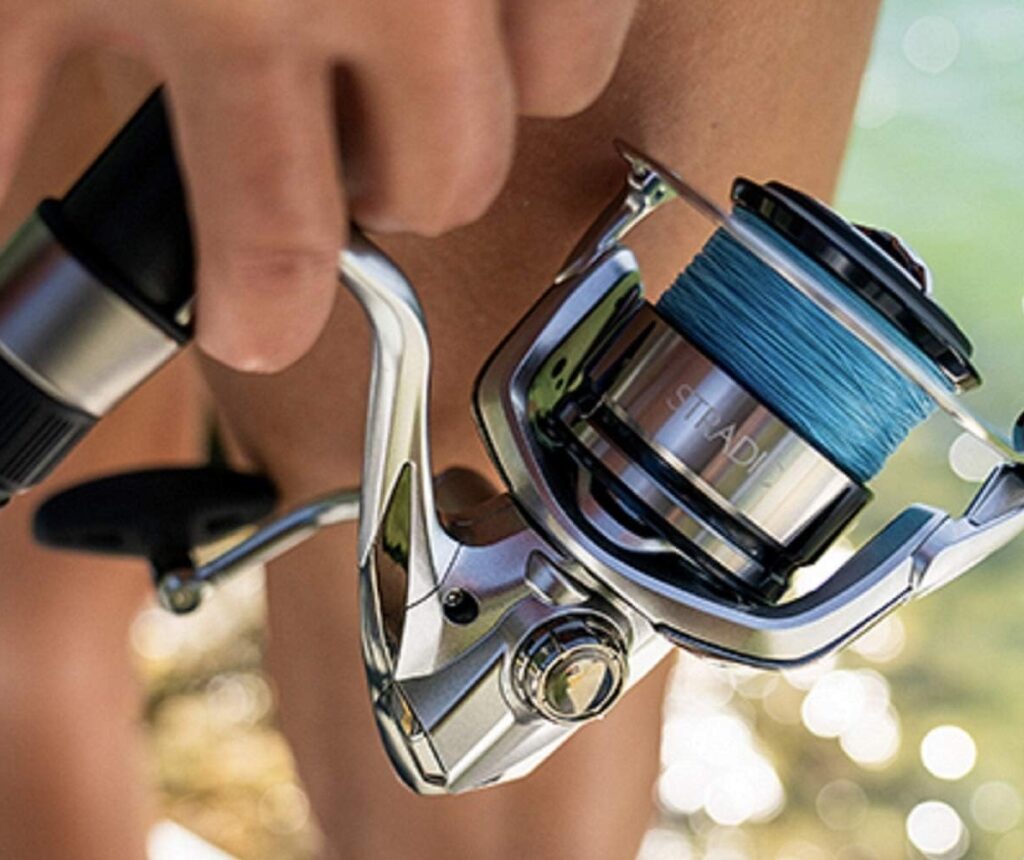The debate between soft plastic and hard body lures has been a hot topic among fishermen for decades. Today, I’m going to share my insights on this age-old question and help you make the best choice for your fishing adventures*.
Understanding Soft Plastic Lures
Soft plastic lures are incredibly versatile fishing tools made from materials like polyvinyl chloride or silicone. Their flexibility allows them to mimic a wide range of prey items with remarkable realism.
The Chameleon of Lures
One of the biggest advantages of soft plastics is their incredible adaptability. You can rig them in countless ways – Texas, Carolina, Wacky style – the possibilities seem endless. This flexibility means you can effectively fish in a variety of situations, from clear, open water to thick, weedy cover.
On one particularly tough day by the water when nothing seemed to be working, switching to a wacky-rigged soft plastic worm saved the day, enticing strikes from bass that had ignored everything else. The adaptability of soft plastic lures make them an essential part of any angler’s arsenal.
Cost-Effective Choices
Soft plastics are generally less expensive than hard baits, allowing you to stock up on a variety of colors and sizes without breaking the bank. This is especially useful when you’re experimenting with new techniques or fishing in areas where you might lose a few lures.

Customization: Your Lure, Your Way
One of my favorite aspects of soft plastics is the ability to customize them on the fly. You can easily trim, cut, or add scent attractants to enhance their effectiveness. Customization allows you to adapt to changing conditions or fish behavior quickly.
The Importance of Hard Body Lures
Hard body lures, also known as crankbaits, jerkbaits, or topwater lures, are typically made from plastic, metal, or even wood. These lures are designed to create specific actions in the water, often featuring built-in rattles or diving lips [or bibs] to attract fish.
Built to Last
One of the standout features of hard body lures is their durability. These lures are built to withstand repeated strikes and can last for many fishing trips when properly maintained. Some hard baits in my tackle box that have been catching fish for years, each with its own story to tell.
Action-Packed Performance
Hard baits are designed to create particular movements like wobbling, darting, or walking the dog. These actions can trigger aggressive strikes, especially from predatory fish. You will never forget the heart-stopping moment when a large bass explodes out of the water as it takes that topwater lure as you walk it across a calm surface at dawn.

Precision Depth Control
Many hard baits are designed to reach specific depths, allowing you to target fish in different parts of the water column. This precision can be a game-changer when you’re trying to reach fish holding at a particular depth.
Choosing the Right Lure for the Situation
The key to successful fishing is selecting the right lure for the conditions you’re facing. Here are some scenarios where each type of lure shines:
When to Use Soft Plastic Lures
I have displayed a range of lures below. These selections should help you catch fish in the different situations you may find yourself in. For more information, Each of the lures is linked to an Amazon item [right click on the image and open the page in a new tab].
1. Finesse fishing in clear water or pressured areas
2. Targeting fish in heavy cover or vegetation. It is recommended to use hooks with weed guards.
3. Slow presentations for cold water or inactive fish
4. Mimicking specific prey items like worms, crawfish, or small baitfish
5. Sight fishing or bed fishing during spawning seasons
When to Use Hard Body Lures
1. Covering large areas of water quickly
2. Targeting active, aggressive fish
3. Fishing in current or windy conditions
4. Imitating fleeing or injured baitfish
5. Triggering reaction strikes from suspended fish
Common Problems and How to Avoid Them
Soft Plastic Issues
Poor Rigging
Improper rigging can lead to missed strikes or unnatural presentation. Take the time to learn proper rigging techniques for different situations. Practice at home before hitting the water to confirm your soft plastics are rigged correctly every time. The packaging that many lures are purchased with often have diagrams and instructions demonstrating how to use them.
Overworking the Lure
Sometimes, less is more with soft plastics. Subtle movements can be more effective than aggressive retrieves. Pay attention to how fish are reacting to your presentation and adjust accordingly. Often, a slow, subtle approach can outperform a fast, aggressive one.
Ignoring Scent
While not always necessary, scent can make a big difference, especially in murky water or when fish are less active. Experiment with different scents and see how they affect your catch rate. Some anglers swear by garlic, while others prefer more natural baitfish scents.
Hard Body Issues
Wrong Size or Color
Matching the size and color of your hard bait to the local forage is crucial. Don’t be afraid to experiment with different colors and sizes until you find what works best. Keep a variety of options in your tackle box to adapt to changing conditions.
Incorrect Depth
Using a lure that runs too deep or too shallow for the area you’re fishing can be ineffective. Know your lure’s diving depth and the depth of the water you’re fishing. Use of a sounder of fish finder and/or contour maps can be of great assistance to help you identify key structures and adjust your lure choice accordingly. Using these devices will give you an unfair advantage. Experienced users can even identify the fish species just by looking at the images and patterns displayed.
Neglecting Maintenance
Rusty hooks or damaged bills can significantly reduce your catch rate. Regularly inspect and maintain your hard baits. Replace rusty hooks, touch up paint chips, and confirm the lure’s action is still correct. A well-maintained lure will catch more fish and last longer. Please check out one of the other blog articles posted here on fishing gear maintenance.
Adapting Your Technique
Mastering both soft plastic and hard body lures opens up a world of possibilities. Here are some tips for adapting your technique:
Match the Hatch
Whether using soft plastics or hard baits, try to match the size, color, and action of the local forage. This often means doing some research before your fishing trip to understand what the fish are feeding on in that particular body of water. Pay attention to what insects are flying around. Look in the water and try to identify the bait fish that are swimming by. Or, if you do manage to catch a fish you want to keep, check its stomach contents to see what it has been eating.
Vary Your Retrieve
Experiment with different retrieval speeds and patterns. Sometimes, a pause or erratic action can trigger strikes. Don’t be afraid to mix things up and try unconventional retrieves. If possible, vary the depth your lure is travelling at. Often, it’s the unexpected movement that entices a fish to strike.
Consider Water Clarity
In clear water, more translucent or natural colors and subtle presentations often work best. In murky, dark or stained water, brighter colors and more aggressive actions can be effective. Always have a selection of lures in both natural and bright colors to adapt to changing water conditions. Refer to the pictures displayed earlier in this article if you are unsure or need some assistance in deciding what you need.
Pay Attention to Structure
Use your lures to effectively target different types of structure. Soft plastics excel around vegetation, while hard baits can be great for covering points and ledges. Learn to read the water and identify likely fish-holding areas.
Seasonal Adjustments
Adapt your lure choice and presentation to the season. Soft plastics might be more effective for slow, finesse presentations in colder months, while aggressive hard baits can shine during warm weather feeding frenzies. Understanding how fish behavior changes throughout the year will help you make better lure choices.
Simple Rigs for Soft Plastic Lures
The Drop Shot Rig
The drop shot rig is a technique that’s incredibly effective for suspended fish or when fishing in deep water. To set up a drop shot rig:
- Tie your main line to one eye of a drop shot hook
- Leave a tag end of about 12-24 inches
- Tie a weight to the end of the tag line
- Thread a soft plastic onto the hook
This rig allows your bait to float above the bottom, making it highly visible to fish. It’s particularly effective for species like bass and walleye.
The Ned Rig
The Ned rig has gained popularity in recent years because of its simplicity and effectiveness. To set up a Ned rig:
- Use a mushroom-style jighead
- Thread a short (2-3 inch) soft plastic stick bait worm, craw or bug, onto the jig
The Ned rig excels in clear water and for pressured fish. It is often used for what is termed ‘finesse fishing’ as a subtle presentation can often entice bites when other lures fail.
The Tokyo Rig
The Tokyo rig is a versatile setup that combines the benefits of a Texas rig with the action of a drop shot. To set up a Tokyo rig:
- Attach a hook to a small metal arm
- Tie your main line to the top of the arm
- Attach a weight to the bottom of the arm using a split ring
- Add a soft plastic worm onto the hook
This rig allows for great sensitivity and a unique action that can trigger strikes in tough conditions.
For more rigs and lots more valuable insight into the world of angling check out this book. It is a must have novice and veteran anglers alike. It is guaranteed to improve your success with over a hundred rigs and knots explained in great detail.
Mastering Hard Body Lure Techniques
Crankbait Bouncing
When fishing crankbaits that sink, don’t be afraid to make contact with the bottom or rocks. The erratic action caused by the lure bouncing off objects can trigger reaction strikes. Practice this technique to develop a feel for when your lure is making contact with the bottom or structure.
The Stop-and-Go Retrieve
This technique works well with jerkbaits and crankbaits. Cast out your lure and begin a steady retrieve. Periodically pause your retrieve for a second or two before continuing. This mimics an injured baitfish and can trigger strikes from predatory fish.
Walking the Dog
This classic topwater technique is used with walk-the-dog style lures. To perform this retrieve:
- Cast your lure out
- Point your rod tip down towards the water
- Use short, rhythmic twitches of your rod tip while slowly winding in. The aim is to make your bait move in a zig zag fashion.
This side-to-side action mimics a wounded baitfish and can be irresistible to predatory fish.
The Importance of Proper Gear
Having the right rod, reel, and line can make a significant difference in your success with both soft plastic and hard body lures.
Rods
For soft plastics, a medium power rod with a fast action is often ideal. This allows for sensitive feel and strong hooksets. Choose a length of around 6’6″ to 7′.
For hard baits, consider a medium power rod with a moderate action of about the same length. This helps absorb the shock of hard-striking fish and prevents them from throwing the lure.
Some suggestions for beginner anglers can be found in this blog article. https://fishinglifehq.com/best-fishing-rods-for-beginners/
Reels
Baitcasting reels are popular for both soft plastics and hard baits, offering precise casting control. However, spinning reels are excellent for lighter lures and finesse techniques. Choose a reel with a smooth drag system to handle fighting fish effectively.
If you are just starting out choose a spinning reel as baitcasting reels can be very finnicky if you don’t have the right technique. From personal experience, I have wasted many hours untangling the mess on my reel as a result of not knowing what I was doing when I started using a baitcasting reel.
If you are serious about your fishing and have the budget available, My personal favorite is the Shimano Stradic. The ST2500HGFL is the perfect size for all your light spin applications.
Line
Fluorocarbon line is an excellent all-around choice for both soft plastics and hard baits. It’s nearly invisible underwater and has low stretch for better sensitivity.
For topwater lures, monofilament or braided line can be better choices because of their floating properties.
The Mental Game: Confidence and Patience
Successful fishing with any lure type needs confidence and patience. Trust in your lure choice and presentation. If you’re constantly second-guessing yourself and changing lures, you won’t give any one technique enough time to prove itself.
Even the most skilled anglers have slow days. Stay focused, adapt to the conditions, and keep a positive attitude. Sometimes, the difference between a good day and a great day of fishing comes down to persistence and mental toughness.
Environmental Considerations
As responsible anglers, we must consider the environmental impact of our lure choices. Soft plastics, if lost, can take years to decompose and will be harmful if ingested by fish or other wildlife. Always dispose of worn-out soft plastics properly and consider using biodegradable options which are now becoming more readily available. Check out these biodegradable scented worms from Japanese company, Marukyu. They are ideal for fishing sandy bottoms with Ned Rig jig heads
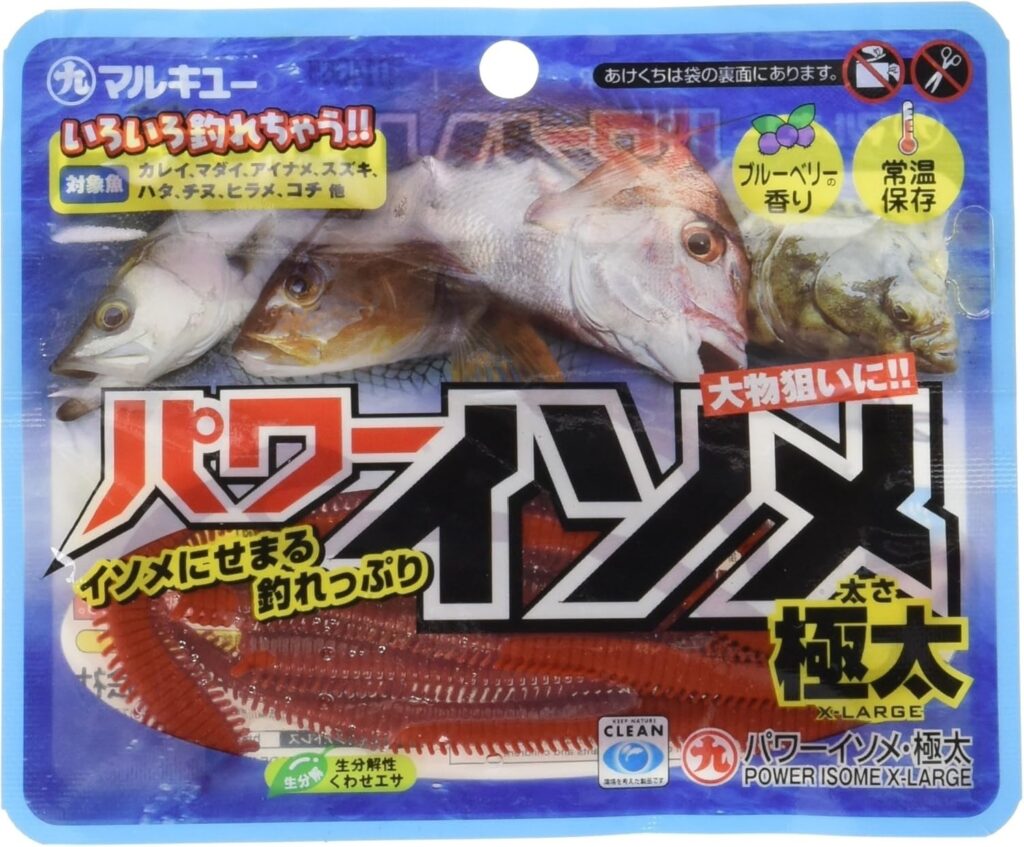
Hard baits, while generally more durable, can also pose risks if lost. Treble hooks can be particularly dangerous to wildlife. They are also more susceptible to being snagged. Consider replacing treble hooks with single hooks on your hard baits to reduce the risk of injury to fish and other animals.
Expanding Your Lure Arsenal
While mastering soft plastics and hard baits is crucial, don’t be afraid to explore other lure types as well. Spinnerbaits, chatterbaits, and swim jigs are just a few examples of lures that mix elements of both soft plastics and hard baits. However, when it comes to buying these, it can become a little confusing as these types are hybridized combinations but they can be equally effective. The more diverse your lure selection, the better prepared you’ll be for any fishing situation.
Frequently Asked Questions
What’s the best soft plastic lure for bass fishing?
The best soft plastic lure for bass fishing often depends on the specific location, the prevailing conditions and the fish’s behavior. However, stick baits or plastic worms, creature baits, and soft plastic swimmer baits are consistently effective choices for bass.
How do I choose the right color for my hard body lure?
When choosing a color for your hard body lure, consider the water clarity and the predominant forage in the area. In clear water, translucent or natural colors that mimic local baitfish are often effective.
In stained or murky water, brighter colors like chartreuse or white can help fish locate your lure.
Are soft plastic lures more effective than live bait?
Soft plastic lures can be just as effective as live bait in many situations, and they offer several advantages such as convenience and durability. However, there are times when live bait can outperform soft plastics, particularly when fish are being finicky.
How deep can crankbaits dive?
The diving depth of crankbaits varies widely depending on their design. Shallow-running crankbaits might only dive 1-3 feet, while deep-diving models can reach depths of 20 feet or more. Always check the manufacturer’s specifications for the expected diving depth of your crankbait.
Can I use soft plastic lures for saltwater fishing?
Yes, soft plastic lures are highly effective for saltwater fishing. Many saltwater species, including redfish, snook, and flounder, respond well to soft plastic lures. Just be sure to rinse your lures and tackle thoroughly after use in saltwater to prevent corrosion.
How often should I replace the hooks on my hard body lures?
You should inspect the hooks on your hard body lures before each fishing trip. If you notice any rust, bending, or dulling, it’s time to replace them. As a general rule, consider replacing hooks after every 20-30 fish caught, or sooner if you’ve been fishing in rocky areas.
What’s the best way to store soft plastic lures?
To maximize the lifespan of your soft plastic lures, store them in their original packaging or in dedicated plastic storage boxes. Keep them out of direct sunlight and extreme temperatures. Avoid storing different colors or types of plastics together, as they can sometimes react with each other and the colors may leech out.
Can I use hard body lures for ice fishing?
While not as common as jigs or spoons, certain types of hard body lures can be effective for ice fishing. Small suspending jerkbaits or lipless crankbaits can work well when jigged vertically through the ice.
How do I know when to switch from a soft plastic to a hard body lure?
Consider switching from a soft plastic to a hard body lure when you need to cover more water quickly, when fish are actively feeding near the surface, or when you’re targeting suspended fish in open water. If you’re not getting bites on soft plastics after thoroughly working an area, a change to a hard bait might trigger strikes.
Are scented soft plastics worth the extra cost?
Scented soft plastics can be particularly effective in certain situations, such as when fishing in stained water or for less aggressive fish. While they may cost more, many anglers find the increased action can justify the expense. Experiment with both scented and unscented options to see what works best in your local waters.
Key Takeaways
- Both soft plastic and hard body lures have their strengths and ideal situations.
- Soft plastics excel in versatility and finesse presentations.
- Hard body lures are great for covering water and triggering reaction strikes.
- The most successful anglers master both types of lures.
- Adapting your lure choice to the conditions is crucial for consistent success.
Tight Lines Everyone.
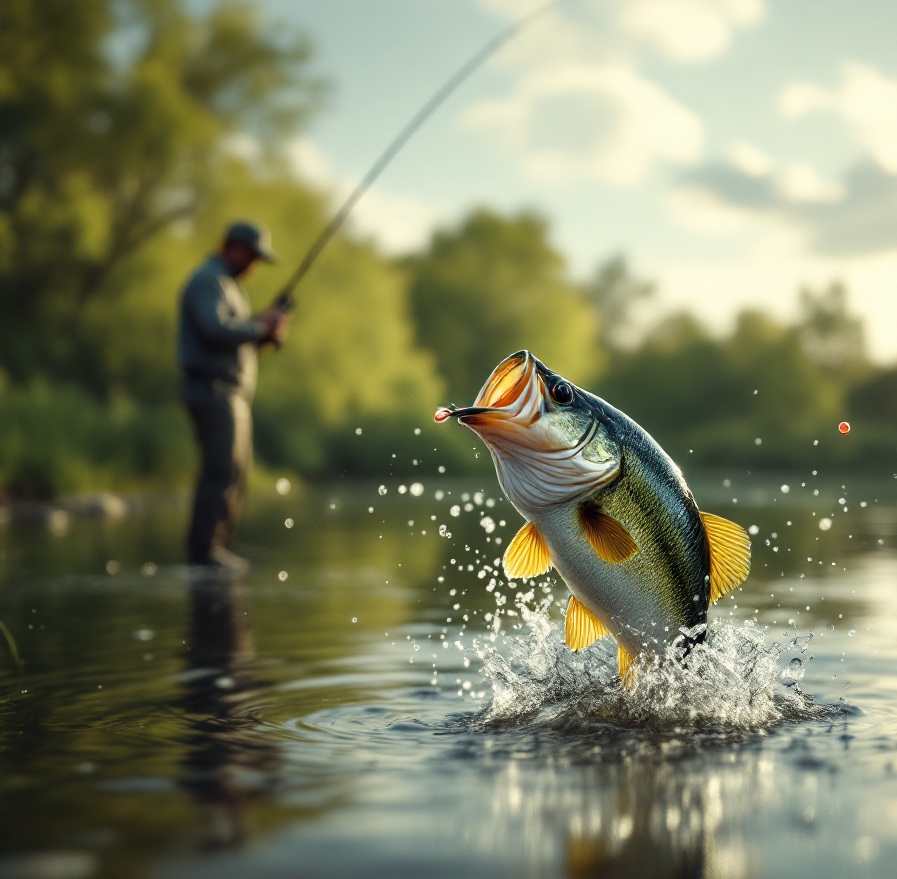
* You will notice that there are quite a few links throughout the blog. Yes, I am an Amazon Associate. Should you make a purchase through one of these links, I may receive a small commission at no additional cost to you. This blog is created as an informative guide. The products mentioned in the blog have been carefully selected for you by zeroing in on the best product for the best value. Thus, reducing your time searching for the right information and suggesting products that will improve your fishing experience. Thank you for your support.
You may also be interested in:
Best Fishing Rods For Beginners
Best Fishing Spots Around The World
How to Maintain Your Fishing Gear
How to Choose the Right Bait for Fishing



